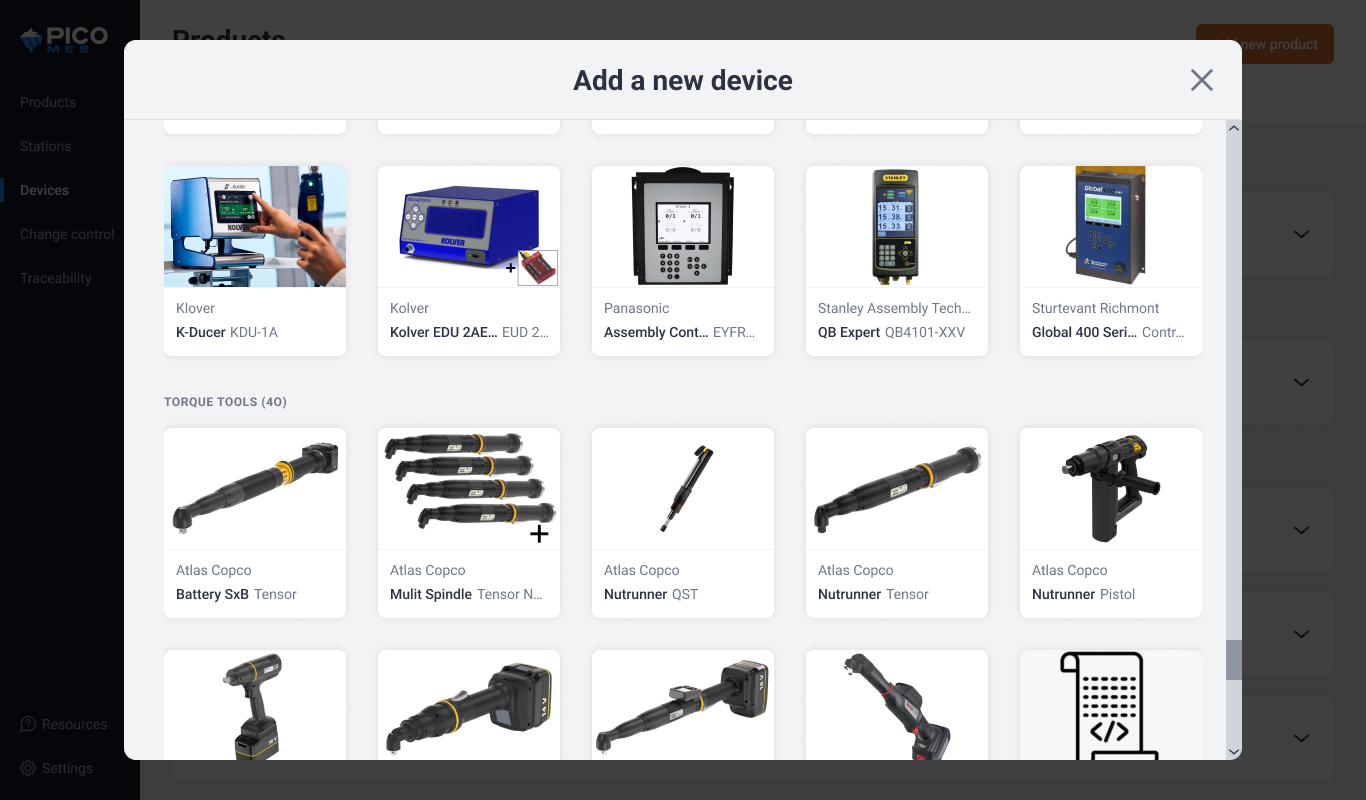#{ item.name }
#{ truncateText(item.metadescription) }
Interested in deploying PICO at your factory but have questions about our system setup? Use this technical guide to help answer your questions about PICO's IT infrastructure, tool and machine connectivity capability, and security procedures.

PICO Server: At the core of the system infrastructure is a central Intel NUC server which connects to the secure PICO VPN via the Internet, and a cloud service managed by our team to push system updates, configuration management, and daily backups, and to provide remote assistance and troubleshooting.
PICO Hubs: Built using Raspberry Pi edge devices, the PICO Hub manages tool and machine connections around the shop floor. Your system can include one or more Hubs, each one connecting to your local network either by ethernet or wi-fi to communicate with the PICO server. Initial setup of a Hub requires registration over ethernet and outbound connectivity, after which it no longer requires an Internet connection.
PICO Software: The PICO Server hosts a web application that is accessible via an Internet browser, and serves the Manage Pages where processes, devices, and stations can be created, modified, and deployed. It also hosts the Operator Interface which is what the operators see and interact with as they build.
PICO typically uses Open Protocol (PFOP) to communicate with commercially available shop floor tools, such as torque tools, but also supports the following protocols for other tools:
We can also connect to non-IoT enabled devices using an intermediary LabJack device that translates a direct wired signal from your tool to PICO. Check out how we connected a Kolver torque controller using this method:
Adam Simon from the PICO Device Integrations team explains how we use an intermediate device to connect a non-IoT enabled Kolver torque controller to PICO's software.
For additional protocols not listed, our Device Integrations team can develop the integration with a lead time of about 1 week - free of charge. If you don't see your tool in our library of 200+ no-code device integrations, you can suggest a tool to be integrated.
PICO uses protocols like OPC UA or Modbus to send requests to machines, read machine states, and collect machine data. Through this interface, you can trigger tests and capture resulting data and cycle time, all in one place.
PICO never directly drives a tool or machine or forces a machine program to start. PICO only sends start requests and the machine determines if all safety conditions are met prior to starting. All emergency stop functionality on the machine is retained for use by the operator.
PICO is SOC2 compliant as of August 2022. All cloud backups are managed through trusted SOC2 compliant partners.
PICO employees' access to on-premise PICO Servers & Hubs is strictly managed through a series of controls. We use a secure VPN whose process controls have been evaluated by expert third party cybersecurity firms. The VPN uses shorewalling and leverages TLS 1.3, TLS Ciphersuite SHA-256, and encryption using ECDSA (curve secp384r1) with a shared TLS-Auth key.
➡️Get started with your free cloud-based deployment of PICO digital work instructions at www.picomes.com/tryforfree.
#{ truncateText(item.metadescription) }
Step into the future of factory operations with Pico MES. Start your journey toward a more efficient, error-proof factory floor today.
